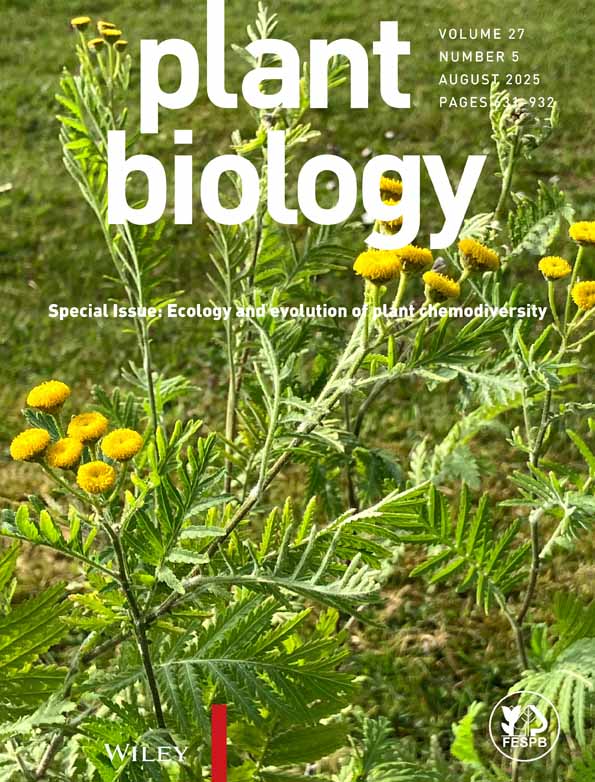Microinjection of Guanine NucleotideAnalogues into Lily Pollen Tubes Results in Isodiametric TipExpansion
Abstract
Abstract: Heterotrimeric and small G-proteins aresupposed to participate in tip growth of plant cells. Quantitative changes intip growth rate after introduction of non-hydrolysable guanine nucleotideanalogues (NA) into lily pollen tubes have been interpreted as support for thehypothesis that heterotrimeric G-proteins regulate tube elongation (Ma et al.,1999 IDREF=“R243-11”>11). Here, we report that microinjection of guanineNA into lily pollen tubes causes loss of growth polarity, resulting inisodiametric tip swelling. Our results are compatible with current modelssuggesting an involvement of plant Rho-related small G-proteins (Rop) in themaintenance of pollen tube polarity and in tip morphogenesis.
Abbreviations:
-
- ADP-β-S
-
- adenosine5′-O-(2-thiodiphosphate)
-
- ATP-γ-S
-
- adenosine5′-O-(3-thiotriphosphate)
-
- GDP-β-S
-
- guanosine5′-O-(2-thiodiphosphate)
-
- GTP-γ-S
-
- guanosine5′-O-(3-thiotriphosphate)
-
- NA
-
- nucleotideanalogues




